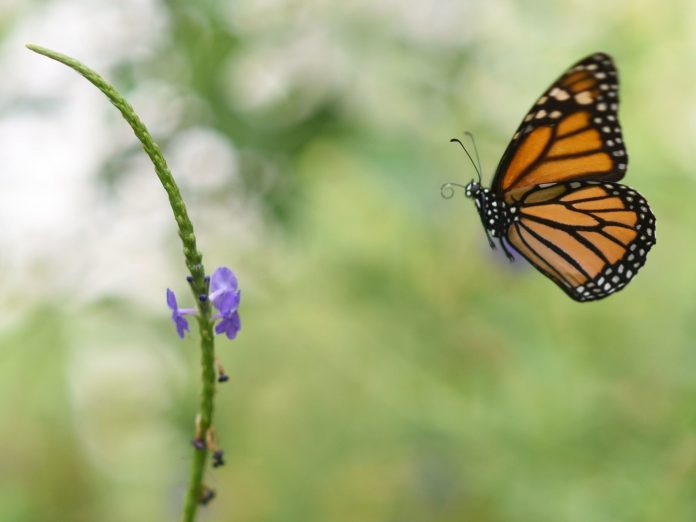
The population of monarch butterflies that migrated to Mexico to ride out the cold winter months in the north fell 26% from a year earlier, according to a new report from the Mexican government and the Word Wildlife Fund.
In 2019, the monarchs occupied 2.83 hectares, nearly 7 acres, in their hibernation forests in Mexico. After their latest migration in 2020, however, they occupied just 2.1 hectares, roughly 5.1 acres.
Jorge Rickards, director general of WWF-Mexico, said the data shows that the migratory process of monarchs is at risk, and urged governments and scientists to work on addressing the issue.
In the U.S., the monarch butterfly is approaching endangered status. In December, the U.S. Fish and Wildlife Service said that listing the butterfly species as endangered or threatened is “warranted” under the Endangered Species Act, but that there were other species that were higher priority to be listed. The FWS said it will review the status of monarch butterflies annually.
“Monarch butterflies show us how individual work, in this case, migration, can become an exceptional collaborative exercise, when all these migrants gather in the forests to hibernate together and buffer the climate,” Rickards said in a statement.
The decline is likely related to the decreasing forest area in the Monarch Butterfly Biosphere Reserve, where the majority of hibernation colonies are recorded. Friday’s report found that in the year leading up to the most recent migration, the forest lost four times more trees than it did the year prior.
“Clandestine” logging was the primary cause of this, the report said. Pest control activities, wind and drought also impacted the loss of trees.
Climate change is also impacting monarchs during their time in the U.S. Changing environmental conditions were not favorable for milkweed, according to the report, which is essential for monarchs to breed. Monarchs lay their eggs in milkweed, and larvae feed exclusively on the plant.
“This limited the reproduction of the Monarch population, with an impact on the migrant generation, reducing the population of this insect throughout North America and leading to a smaller population occupying the Mexican forests during its hibernation,” the report says.
Monarchs are the only butterflies known to take part in a two-way migration. According to WWF, they travel between 1,200 and 2,800 miles every year so that they can spend the winter months resting in the forests of central Mexico.














